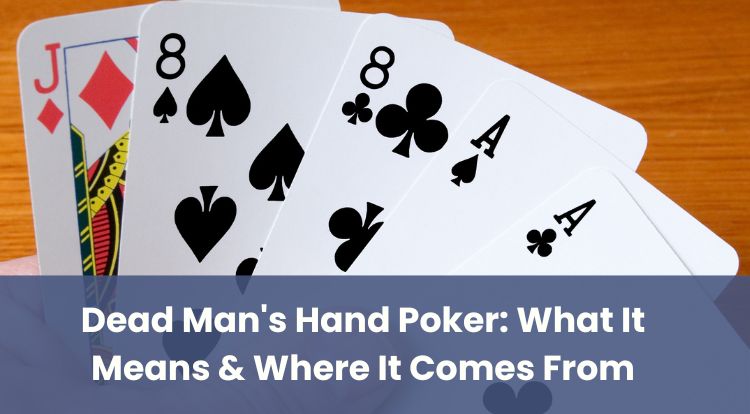
Poker has developed its own set of terms and stories, and one of the best known is the “dead man’s hand.” You may have come across it in a film or a television series, even if you have not played poker before. The phrase sounds straightforward, yet the history attached to it has made it a subject of interest in card rooms and in popular culture.
If you are interested in what it represents, where the name came from, or why it is remembered, then read on to learn more.
What Is the Dead Man's Hand in Poker?
The “dead man’s hand” refers to a particular two-pair holding in poker. It is made up of the ace of spades, ace of clubs, eight of spades, and eight of clubs. The fifth card in the hand is not agreed upon and varies in different accounts.
In hand rankings, two pair is placed below combinations such as a straight, flush, or full house. Drawing the exact black aces and black eights does not carry any special meaning in terms of gameplay. The combination is simply treated as a two-pair hand under standard rules.
You may see the dead man’s hand referenced in poker-themed games or in visual design, but this is purely stylistic. It does not affect the rules or outcomes.
Where Does the Dead Man's Hand Come From?
The hand is most often linked to an event in the American West. In 1876, Wild Bill Hickok was shot while playing poker in Deadwood, South Dakota. Later reports suggested that his final hand contained two black aces and two black eights. Accounts have disagreed on what the fifth card was.
The story spread through books, newspapers, and later films and television. From there, the name became widely recognised and connected to the game.
In the present day, it remains part of poker folklore rather than an element that changes how the game is played.
The Story of Wild Bill Hickok and the Dead Man's Hand
Wild Bill Hickok was known as a lawman and gambler in the American West. In August 1876, he joined a poker game in Deadwood. During the game, he was shot from behind. Later retellings of the event linked his final hand to two black aces and two black eights. Some sources added a fifth card, although details are inconsistent.
The image of a recognised figure meeting his end while holding that hand was repeated in novels and films. Over time, the detail became part of wider poker culture.
That is why you may still hear the phrase, even if you do not see the exact cards often in actual play.
Why Is the Dead Man's Hand Considered Unlucky?
The reputation of the hand comes from its association with the shooting of Wild Bill Hickok. Over time, writers and filmmakers used it as a signal of trouble. The repeated link gave it a reputation as a sign of misfortune.
In standard poker, there is no difference between two black aces and eights and any other two-pair. The hand does not alter the way a round is played or the ranking system.
The idea of it being unlucky exists in stories rather than in the rules of the game.
How Is the Dead Man's Hand Shown in Popular Culture?
You may have seen the dead man’s hand appear in films, novels, or television where the American West plays a part in the story. Directors often use it to create atmosphere or signal that a turning point is coming.
It is also used in other forms of entertainment such as graphic novels, board games, and themed artwork. Some online games or slots may include a reference to it as part of their design, but this does not influence how the games operate.
Does the Dead Man's Hand Have Any Role in Poker Today?
On regulated UK sites, the dead man’s hand is ranked as any other two-pair hand. There are no additional payouts or special rules attached to it. If you see it mentioned in a themed table or in a feature, this is for reference to poker history rather than for gameplay purposes.
In poker rooms, tournaments, or casual games, the hand carries no special treatment. Standard hand rankings apply at all times.
In short, aces and eights represent a piece of poker history. In play, they are judged in the same way as any other two-pair.
**The information provided in this blog is intended for educational purposes and should not be construed as betting advice or a guarantee of success. Always gamble responsibly.
*All values (Bet Levels, Maximum Wins etc.) mentioned in relation to these games are subject to change at any time. Game features mentioned may not be available in some jurisdictions.
